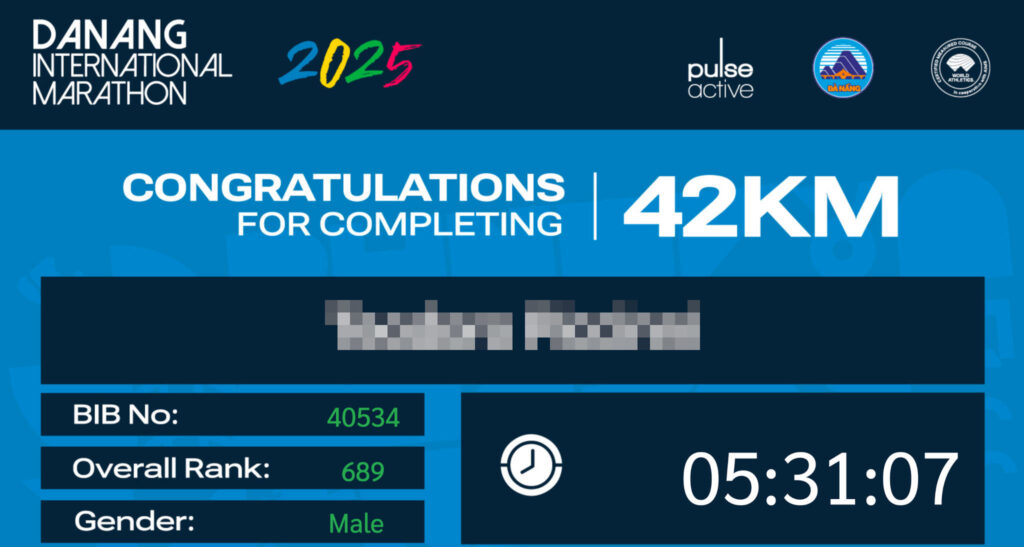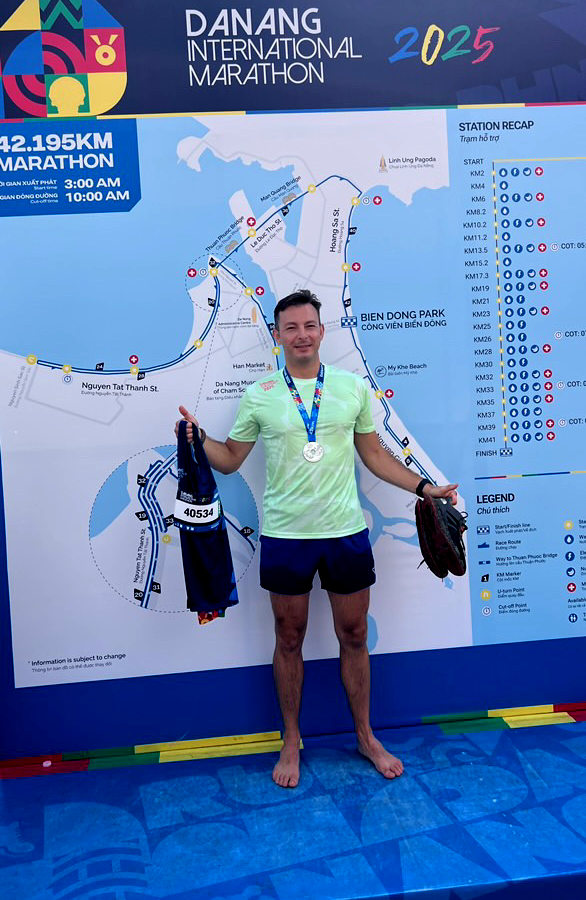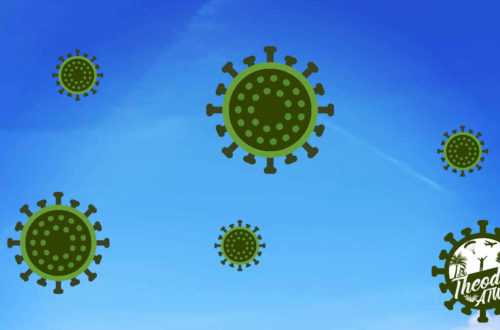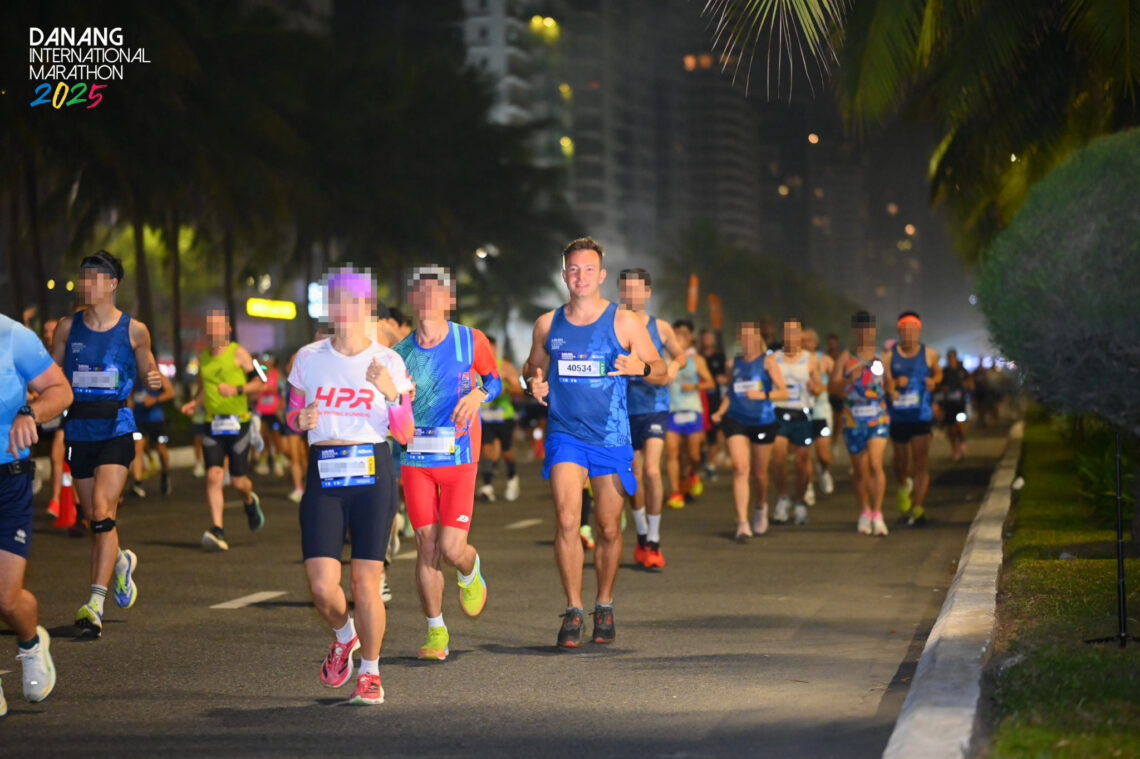
Da Nang International Marathon 2025 – My first marathon
I never thought I would be running a marathon around that time, it had been a dream for me for many years but, between lack of time and a serious ankle injury, I had hung up my running shoes since 2019.
I left my office job several months ago. During these months I have traveled far and wide within Europe and South-East Asia. I have never stayed for more than four days in the same place. The last country I visited was Laos. This last trip was tiring and, unfortunately also because of its known dangerousness due to the aftermath of the Secret War, I experienced it as an average tourist, not like a real traveller. It was time for a break and, perhaps, enjoy a seaside for a while.
The closest states I was considering for this break were Thailand, Vietnam and Cambodia. So after researching a bit of information the choice was quite simple. While choosing I was in Vientiane, the capital of Laos. Geographically, the sea of Vietnam was the closest, so I bought for 30€ a ticket for a 24-hour trip on a night bus from Vientiane to Da Nang. According to ChatGPT, around Da Nang there are some of the best beaches of the whole Vietnam. When I arrive in Da Nang, after weeks of dust, jungle and wild animals, I find a town that immediately makes me feel at ease. I look for the cheapest hostel and start exploring.

On my first evening in Da Nang, I started from exploring the city’s seafront. In the distance, I noticed bright lights, music, and a lively crowd gathered around some illuminated stands. Intrigued, I walked closer and discovered that it was the Da Nang International Marathon.
Immediately, a thought crossed my mind: “I’m not trained, but this year I spent two months cycling across Europe with 50 kg of luggage and six months traveling the world with a 15 kg backpack on my shoulders. Along the way, I even tackled a few mountain hikes, including the trek to Annapurna Base Camp in Nepal. Maybe I can manage a half marathon!”.
Determined, I headed to the information booth, ready to sign up for the half marathon. The girl at the counter greeted me with a smile and said, “The 21 km race is sold-out, we only have spots left for the 5 km or the full 42 km marathon.” I thanked her with a wistful smile, telling her I’d think about it.
Forty-two kilometers sounded insane to me…
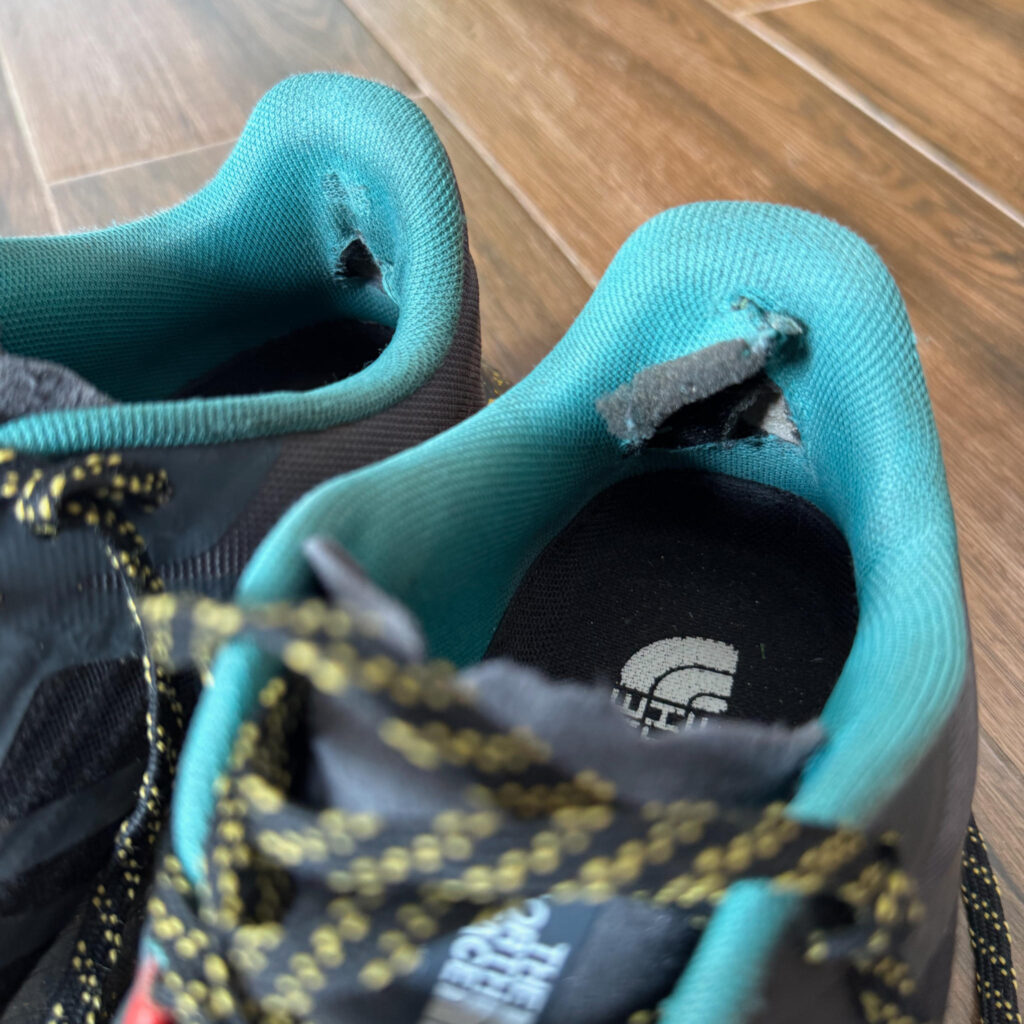
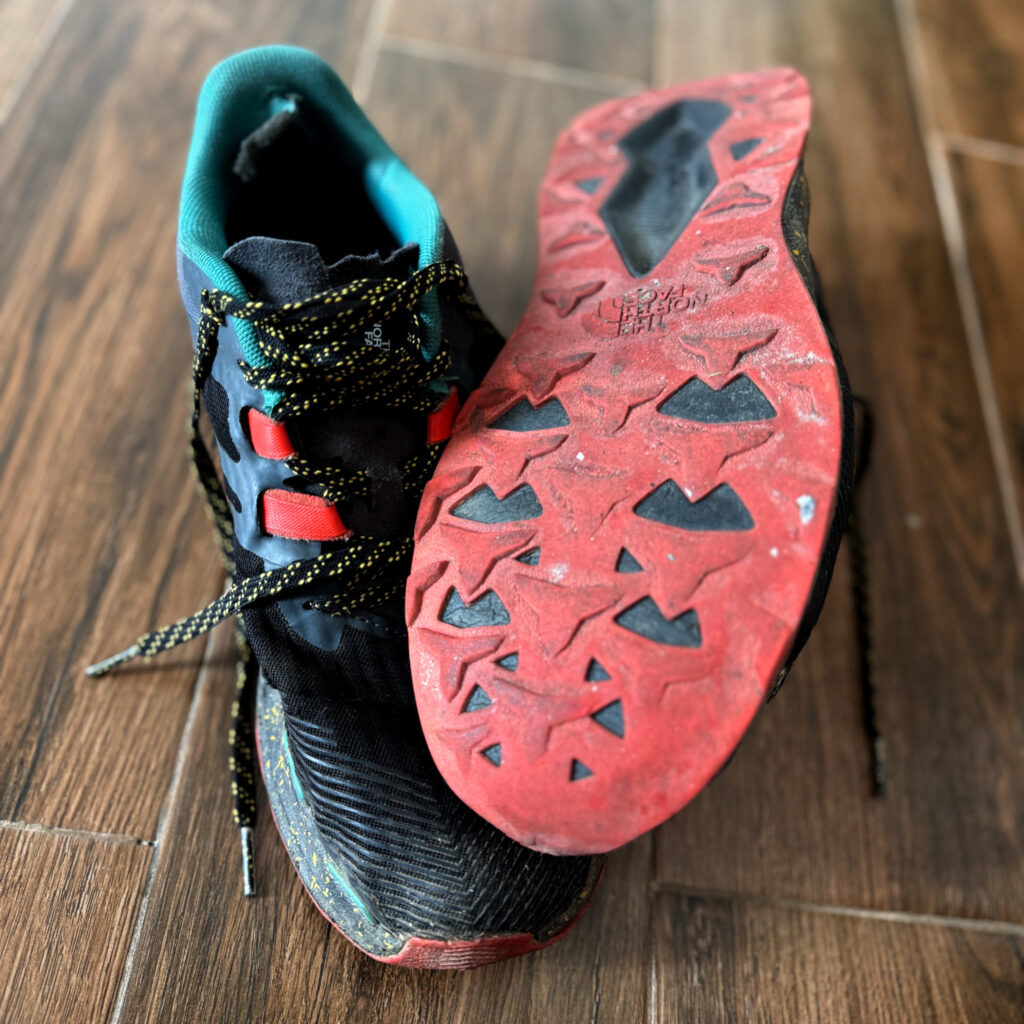
I needed to test myself a bit before throwing myself into something out of the blue. The coming morning, I woke up and I did a 5 kilometers run trying to keep a 5:30 pace. What did I want to try? To stay light, when I travel, I only bring with me one pair of shoes (the pair that I wear every day) and a pair of flip-flops. This test was just to see if the shoes would give me problems while running. They have been accompanying me on most of my adventures in the last three years now. The soles are worn out, and the inner padding of each shoe has a huge hole at the back but, despite all that, they passed the test.
I close my morning run well, without fatigue and without any particular pain. Back at the hostel I exchange two messages with an experienced marathon runner and several friends. Their support gave me the right motivation to sign up for the competition. In the worst case scenario, I could have withdrawn while running…
On the evening of 22 March 2025 at 19:00 I went to the same stand saying: “I would like to register for the marathon”. My inner self was hoping that the bibs were already sold-out at that time… but the girl at the information point told me with a bigger smile: “You are very lucky! This is the last one!”. Doh!!! That race bib was there waiting for me…. I expressed my thoughts to her, filled out the various forms, and completed the registration. I was subscribed!
While the girl passes me the bib and starts putting together the race kit, a guy from the organisation comes up to look at my bib: “oh, you’re running the 42 kilometers run! It never happened to us to sell a marathon entry the night before the race, usually people sign up months before”. I didn’t know what to answer so I simply said, “I didn’t think I would sign up either! Now I must gear up for the race. I need shorts and energy gels”.
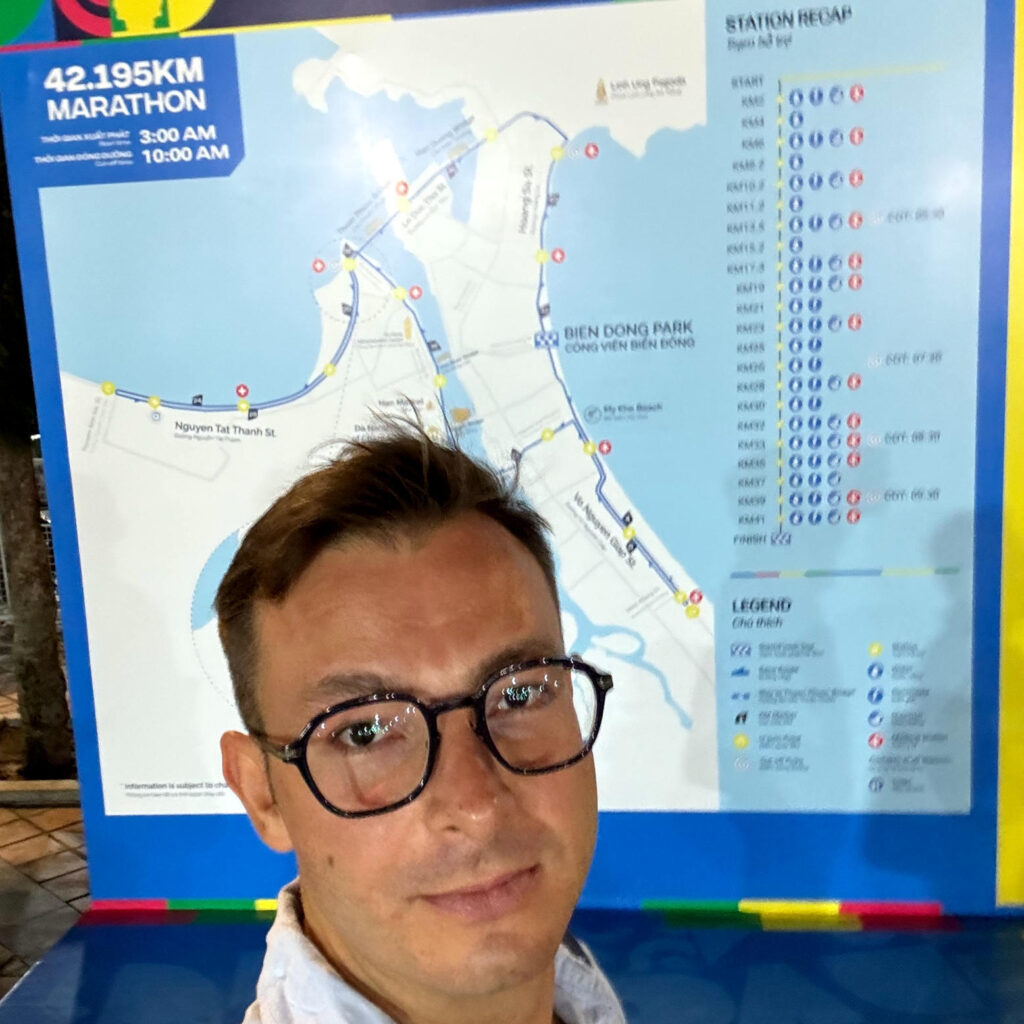
“At which time is the departure time?” incredulous at my total cluelessness they look at me and answer: “At 3:00 a.m.!”. I thank them, I bought the cheapest shorts I can find at a nearby stand together with three energy gels and I headed straight for my hostel. By 9 p.m. I was in bed with an alarm clock at half past midnight. Would three and a half hours of sleep have been enough for me?
The alarm
Like a Swiss watch at 00:30 a.m. I wake up, try to figure out if I am alive or if the images of my marathon entry were just a scary dream… nothing… the alarm clock was going off and the bib was there looking at me already attached to my running vest.
Without getting out of bed, I open a can of cold coffee, eat a brioche and drunk a half-litre bottle of water. A quick step into the bathroom and at 1 a.m. I started my 3 kilometers walk from my hostel to the start of the race.
Along the way, I met two other marathon runners who were much better prepared than me. Walking with them was very helpful. Both of them explained to me that the real marathon would start at kilometre 30 and that I would have to keep a very relaxed pace (6:00 or 6:30) from the start in order to finish it.
Unfortunately, I underestimated this advice.
Reading on the Internet, I then discovered that there is the term “the marathon wall, which defines this point where the real test for a marathon runner’s physique begins.
A bit of history
After arriving at the start, I couldn’t stop myself from chatting with the people around me. Coincidentally, I started chatting with the owner of the event who proudly tells me that this is the 12th edition. This marathon was the first in Vietnam to receive certification from the International Association of Marathons (AIMS) and the World Athletics Federation (IAAF) in 2014. Thanks to these certifications, participants’ achievements are valid for entry into prestigious marathons such as Boston, London, New York, Berlin, Chicago and Tokyo.
Warm-up
All the athletes around me were starting to do stretches, Jumping Jacks and High Knees. So, I pulled out all the knowledge I had accumulated from my old Freeletics training plan and sketched out a warm-up myself. In the meantime, the organisation also invites everyone near the stage to do a structured warm-up all together.
Once the warm-up was over, the first thoughts of going back to the hostel to take a shower and crawl into my bed crossed my mind. But nothing, I was on the ball, let’s open the dance!
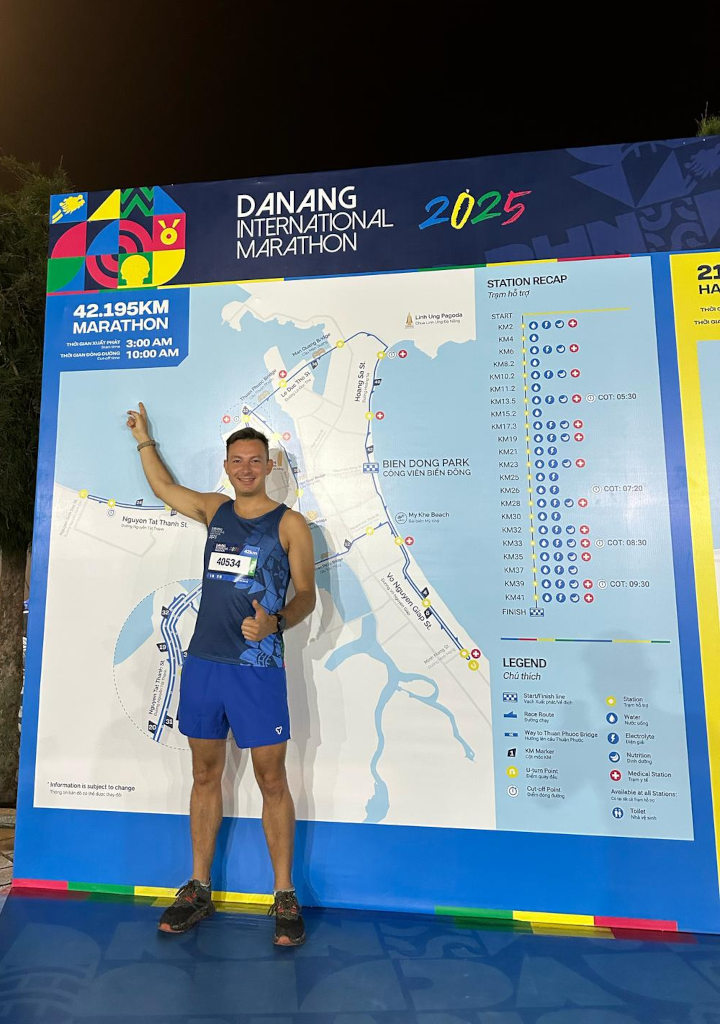
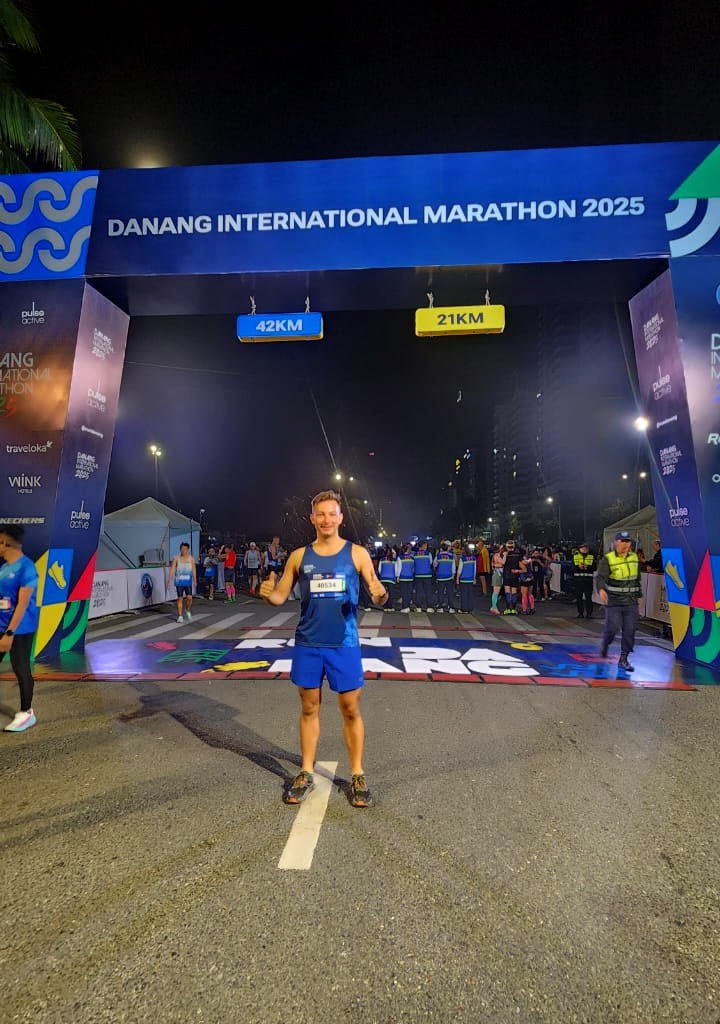
Let’s go!
At 2:40 a.m., everyone gathers on the starting grid for the customary photos, and at exactly 3:00 a.m., the marathon begun! The weather was ideal, I was warm, my legs were running well, and I kept a 5:30 pace for the first 5 kilometers. The marathon was very well organised with water and electrolytes points and food every 2 kilometers.
Every couple of refreshment points I took the opportunity to walk about thirty metres to recover and drink before restarting with my pace. This was another great strategic tip from my new friend Eric from Singapore, one of the two athletes who accompanied me during the warm-up.
Mindful of my cycling trip, I was very careful to prevent energy depletion. Even though I never felt the hunger pangs during the entire route, I took a piece of banana at each refreshment stop and ate a bite at a time while continuing to run.
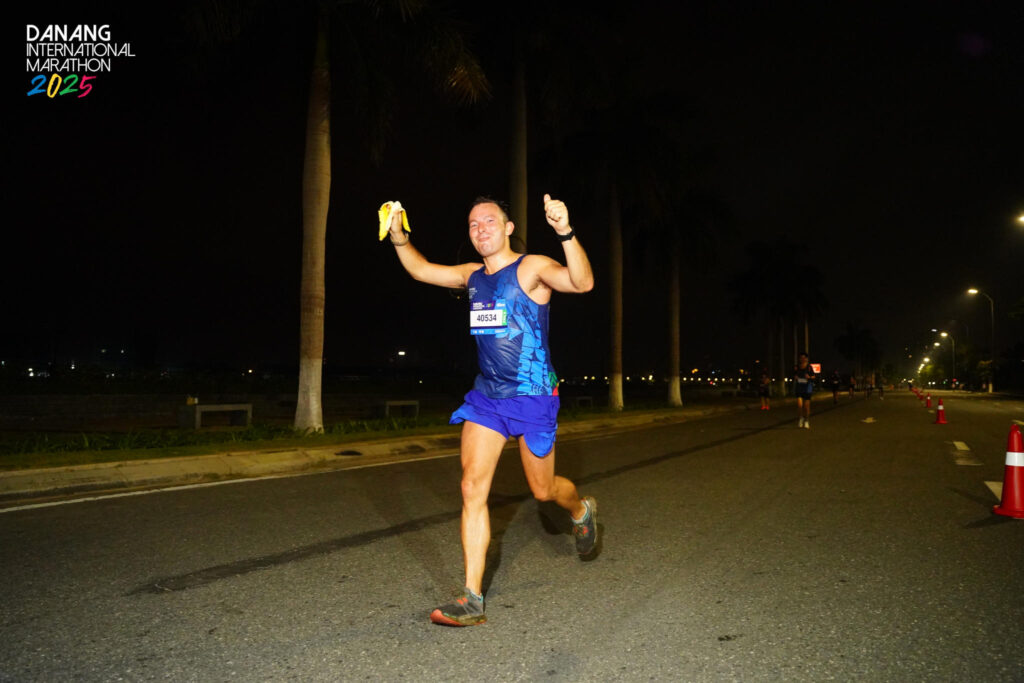
The half marathon
The 21 kilometers were my goal, then I might as well have withdrawn from the competition. The kilometers flow, I keep walking when I meet the refreshment stations and took a few pee breaks. Despite this, I arrived at kilometre 25 in 2:24:48. I was maintaining, without exerting myself, a pace of 5:47. In my opinion it was very good considering my preparation.
Every now and then the 4 hours Pace Makers, were passing me during my refreshments breaks and I was passing them right after. Pace Makers are the runners hired by the organisation who were beating the clock to who wanted to finish the marathon within a specific time. They were surrounded by a dense group of athletes who kept their pace, often to pass them I had to jump in and out of the road, or I had to move onto elevated pedestrian paths on the side. These stresses on my legs were not a great strategy and were probably one of the causes of the overloading of my joints at the end of the race.
I was not tired, my legs were spinning well, and my breathing was regular, not wheezing. While running I also had a ten-minute chat with Nicoletta, a Ukrainian girl who then lost me because she was more constant than me. In this chat she also warned me: “from kilometre 30 don’t think any more about the fact that you are running, focus on something you enjoy. Think of a holiday! I think about chocolate for example. Remember, from there on, every kilometre is worth double. At that point in order to cover one kilometer you will have to put exactly the same energy as you put to cover two kilometers now”.
Inside I kept thinking: “I feel everyone around me with breathlessness, I feel feet dragging on the ground, I am still fresh! What could possibly be so overwhelming since kilometre 30?”
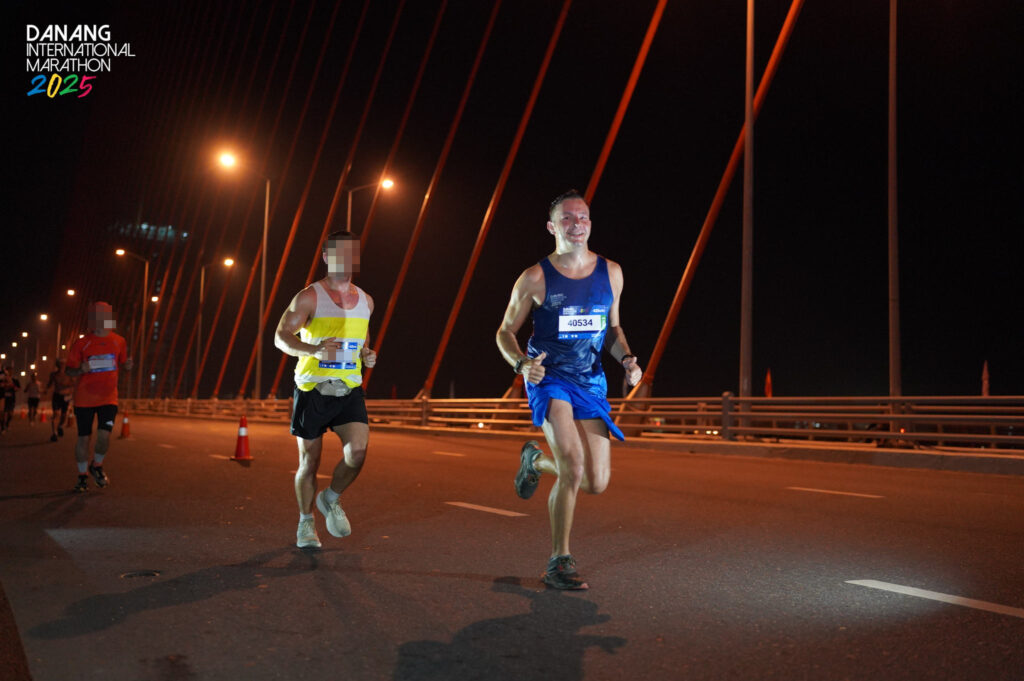
But then…
I don’t know if I pulled it off with my swaggering thought just above, but at kilometre 26 my pace was heavily delayed by an obligatory break at the first ambulance.
For a few kilometers I had been trying to ignore a constant burning in my nipples, but here it had become unbearable. I ran some more, keeping my shirt off the skin with my hands. This prevented the friction of the fabric on my skin from aggravating the situation. But by now even without rubbing, even just the air or drops of sweat were burning my skin as if I had been hit by a lapillus that had just been ejected from Mount Etna. I explained the problem to the doctor and lifted my shirt. Between the hair and the sweat, it was impossible to put a plaster on, so he passes me some cotton to try to dry the area around the nipple. When he lifts the cotton that he had used to dab I saw his astonished face… I look at the cotton… it was soaked in blood. I look him in the eyes and I said “It’s ok!”. I helped the doctor and nurse place the band-aids and I restarted running running.
Nothing to do… after one kilometer the patches had already come off. The only drastic solution, to be able to hold out for another 16 kilometers, was to take off the tank top. Fortunately, here in Vietnam, running shirtless does not lead to disqualification from the race. I simply had to take care that the bib was always clearly visible.
My race continued. Was the suffering over?
The marathon wall
Everyone had stressed to me from the start to stay very conservative until kilometers 30 and 32. From there on it would be all about the mind. There the real marathon begins. I obviously didn’t listen to them because I like to experiment and test myself. I didn’t understand the problem, I didn’t feel it, I didn’t see it. Was this famous wall invisible?
What is the marathon wall?
The marathon wall is a phenomenon experienced by many runners around the 30th-35th kilometre of the race. It is identified with a sudden collapse of energy, fatigue becomes unbearable, body and mind begin to collapse. There are also scientific explanations for this event. The body begins to consume fat to generate energy, but this process is much slower and less efficient. Typically, here the glycogen in the muscles and liver is depleted, the body then becomes slower to generate the energy needed to activate the muscles.
For me, it was slightly different. Thanks to the punctilious organisation of the event, I arrived at kilometre 31 without difficulty. I was hydrated, never cramped, never felt tired and thanks to the 3am start, the temperature was still more than acceptable. I never had any energy or mental collapse.
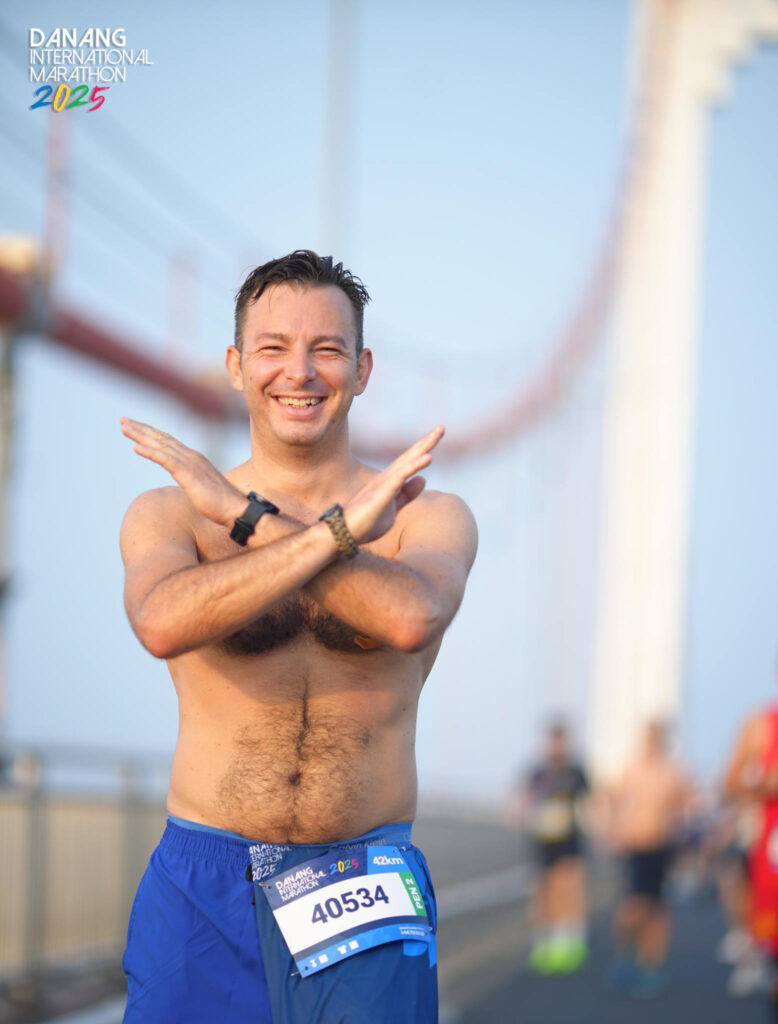
I know, it was no laughing matter, the last bridge had arrived. I tried several times to push again to run again but this image well represents the moment. I was knocked out…
What did happen to me?
The race analysis from Strava shows that I passed the wall at kilometre 31, I was beginning to wonder if it really existed or if I was some kind of superhero. I kept not seeing it… but at kilometre 32 it came. It was like I passed the wall without seeing him but suddenly he was there! I didn’t see it, but I felt it crashing on my neck. I felt the hit of each of his bricks as he collapsed on my back. Probably my bravado, flaunted all along the way, served as a binder to toughen the wall and weigh down the blow on my physique.
Why did I drastically slow my pace? I wasn’t tired, I wasn’t lacking in motivation, I went through all the happy thoughts I could think of, from bike to friends, from food to pussy, but nothing… I had a physical breakdown. Pain in my hips, a tendon in my left leg started to get inflamed. The pain started from the middle of the shin bone and reached the back of the foot. They were constant pains that did not subside in any way. I stopped stretching, tried slowing down and resuming, but each attempt only aggravated the situation.
The physical pain was severe, but I still tried to resume running several times. When I accelerated my pace, it felt like my feet were gone. Each blow on the asphalt was like a direct hammer blow on my tibia and fibula. It was as if my feet were no longer there and were no longer cushioning the blows I was receiving on my bones with every step. Whatever rhythm I kept, just the swinging movement of my legs around my hips caused me pain. It was as if the muscles in my groin, the joints and tendons in my leg could give way at any moment.
Should I have given up? Maybe so. A very strong inflammatory process was underway. Despite anti-inflammatories and massages, the tendon pain and swollen leg accompanied me for five days after the race. I decided not to give up anyway and dragged myself to the finish line walking in this condition. Sometimes I walked with my eyes closed so as not to see the asphalt running underneath me and to try to isolate my thoughts from the pain.
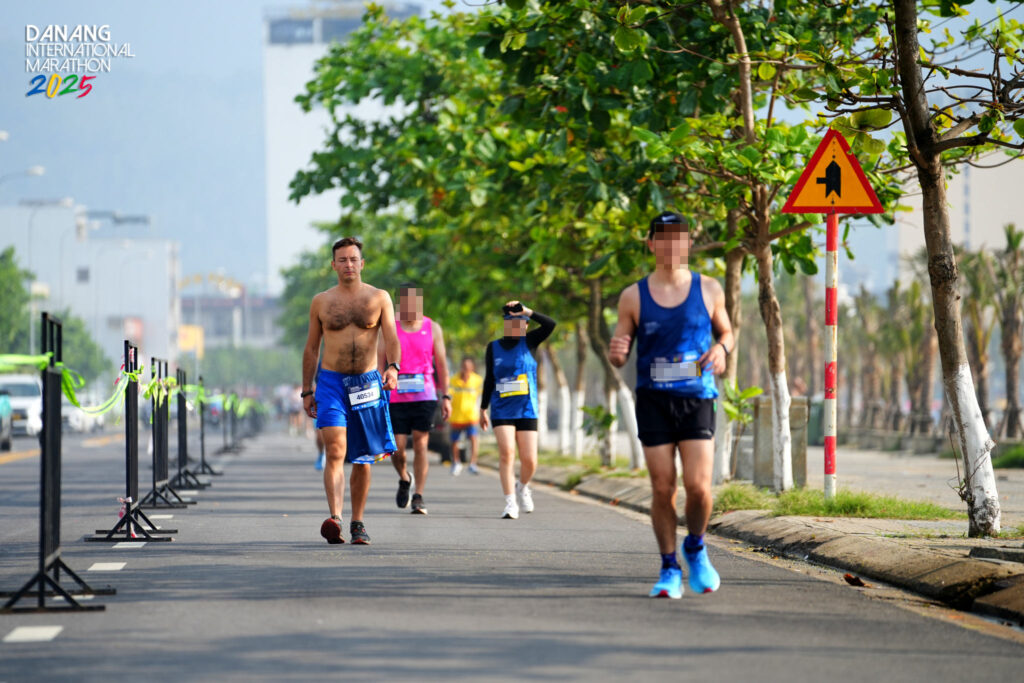
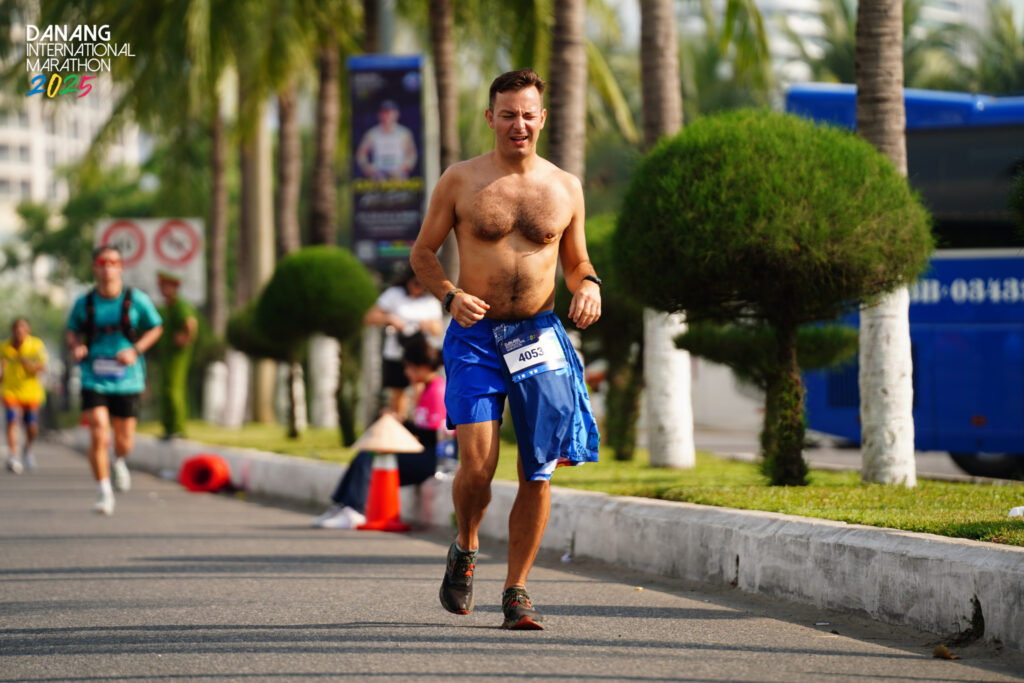
The finish line
It took me 2 hours and 30 minutes to do those last 10 kilometers, looking at my GPS the kilometers did not increase, sometimes I looked at the display several times and the distance I covered between peeks did not even increase by 100 metres. I was beginning to think that I would collapse on the road.
One step at a time, however, I arrive at what my GPS shows as kilometre 41. I try to sketch a run… nothing…. I can’t. I’m really going to tear it up, but I’m almost there! Seeing that number on the display was recharging me. Until a girl from the organisation shouts at me, “Come on!!! Two more kilometers and you’re there!” I stop, look at her smiling and say, “my GPS says 1 kilometre… tell me you shot a random number please“. I received no reply but that last bit was truly eternal.
At the finish line many of the organisers applauded me and urged me to run the last few dozen metres. I tried, I ran, I ignored the pains, I shook hands with the people from the organisation who were waiting for me jubilantly at the finish line and then….
I never imagined that, crossing the finish line, a blockage would rise in my throat, I never imagined that my eyes would swell up. But it happened, I cried…. I was ashamed and immediately tried to hide my emotion. I walked a lot, I was slow, I was devastated in my head I hadn’t done anything exceptional in my opinion. I am still amazed at how finishing my first marathon, even though it went badly, was still such a strong emotion that it overwhelmed me in the end.
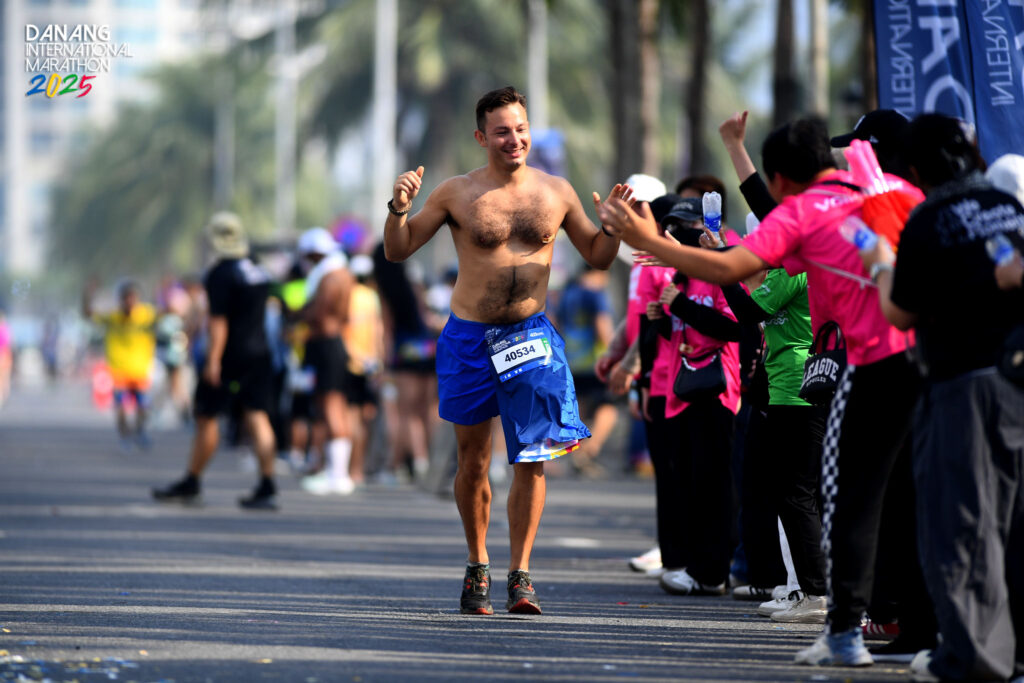
Thanks to the city of Da Nang
and the entire organisation of the
Da Nang International Marathon
for gifting me this unforgettable memory!
